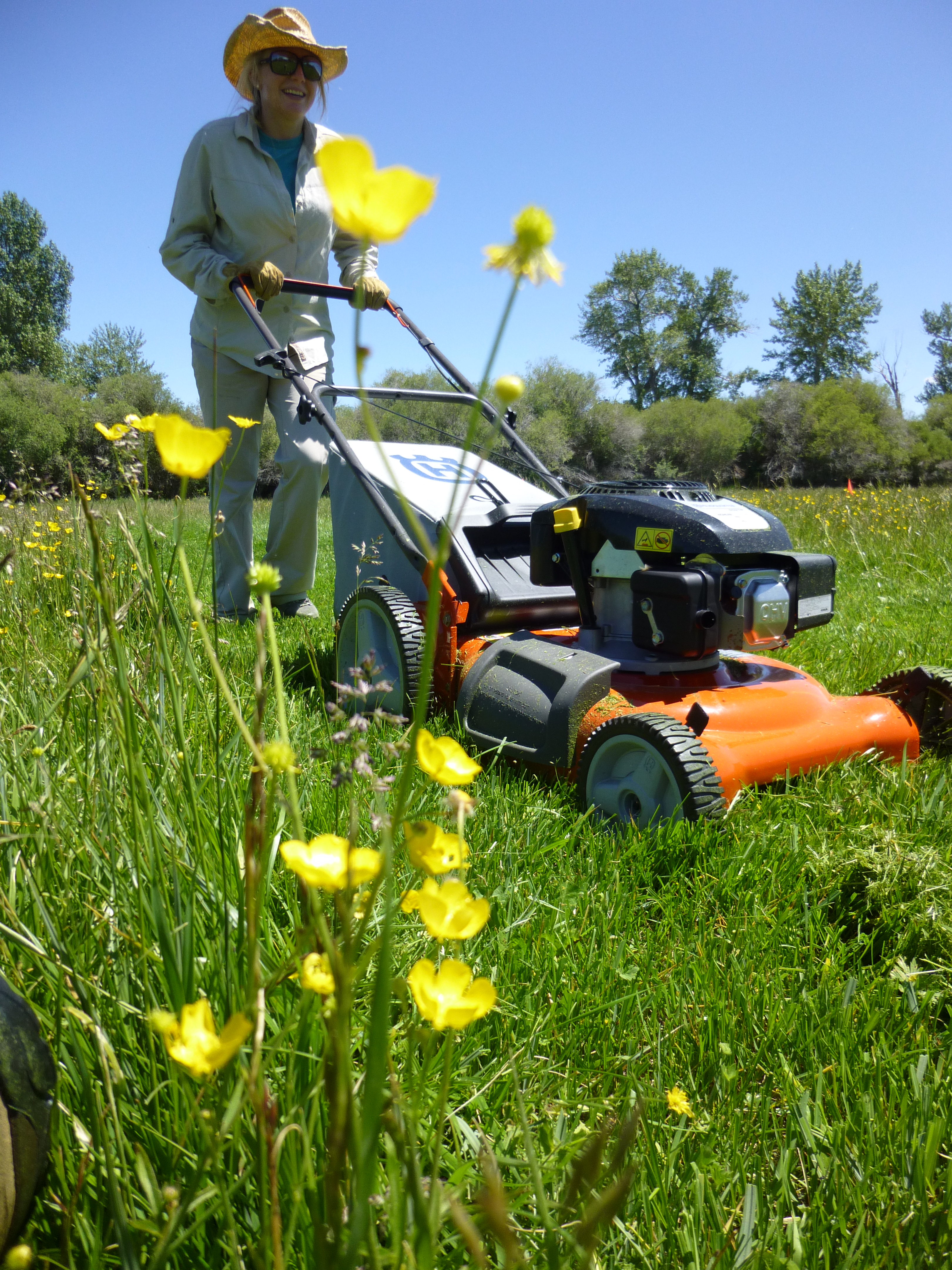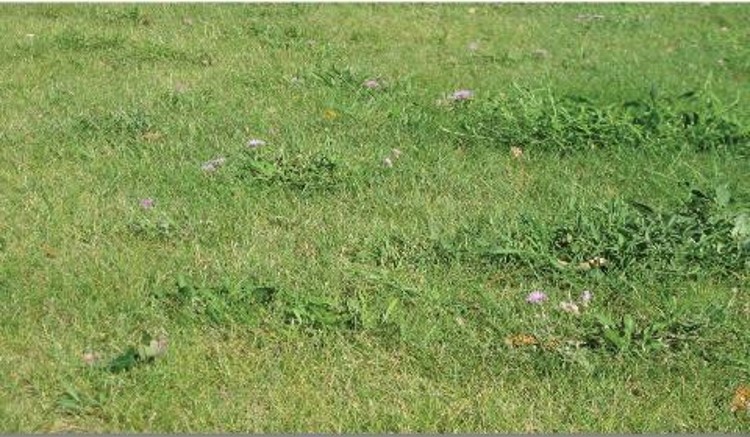Mowing to Manage Invasive and Noxious Weeds
Introduction

Photo; Noelle Orloff, MSU.
Mowing is often overlooked as a weed management tool, but it can be effective if done properly. For best results, timing and frequency of mowing should be based upon the weed’s biology and growth stage. More specifically, when and how often to mow depends upon the weed’s method of reproduction —seed only or seed plus creeping roots.
Weeds that Spread Only by Seed
Species that reproduce only by seed are best controlled when mown just prior to or at flowering. If done at this time, these species usually only need to be mowed once per season. Spotted knapweed is a great example: The best time to mow it is mid-July to early August when the first buds are opening into flowers. Research conducted at MSU showed an 85% reduction in spotted knapweed adult plant density when it was mowed once in late summer for 3 years (Rinella et al. 2001). Another study clipped (to simulate targeted grazing) spotted knapweed in August and reduced viable seed production to zero (Benzel et al. 2009).
It’s tempting to mow as soon as weeds are tall enough to mow and

Photo: Jane Mangold, MSU.
then mow them repeatedly throughout the growing season. While this may reduce flowering and seed production compared to doing nothing at all, the target weed often assumes a prostrate growth pattern, growing just low enough to escape the mower deck but still flowering and producing seeds (spotted knapweed, photo above). By waiting to mow, the weed is cut after investing months of growth into its most important act—producing seeds—and it may not have enough time to grow flowers again and produce seeds before summer ends.
If mowing occurs later than ideal and the weed has seeds on it, bag clippings if possible. If bagging isn’t possible, rake and pile clippings in an area where follow-up management can occur. If clippings can’t be contained, it may be best to not mow as mowing can scatter seeds and may result in a bigger infestation next year.
Weeds that Spread by Seeds and Creeping Roots
Species that reproduce by seeds and creeping roots, for example Canada thistle, need to be mowed repeatedly throughout the growing season. This mowing schedule prevents seed production and stresses the root system as the weed uses carbohydrates in the roots to regrow foliage after each mowing. Mowing to manage species that spread by seeds and creeping roots takes diligence, and a realistic management goal should be containment and reduction to a tolerable level rather than eradication. For these tough-to-control species, an integrated approach is necessary, and mowing can offer benefits when combined with other tools.
Integrating Mowing with Other Tools
Mowing prior to applying an herbicide can enhance weed control by removing foliage that can intercept spray solution. This is especially important when herbicides are applied in the fall to rosettes that are greening up after the hot, dry portion of summer. See the MSU Extension publication Mowing to Manage Noxious Weeds for more information.
Further Information
For more information about this month's weed post, contact Extension Invasive Plant Specialist Jane Mangold. Past posts are available in the Monthly Weed Post Directory.
This weed post is also available as a printable PDF (277 KB).
